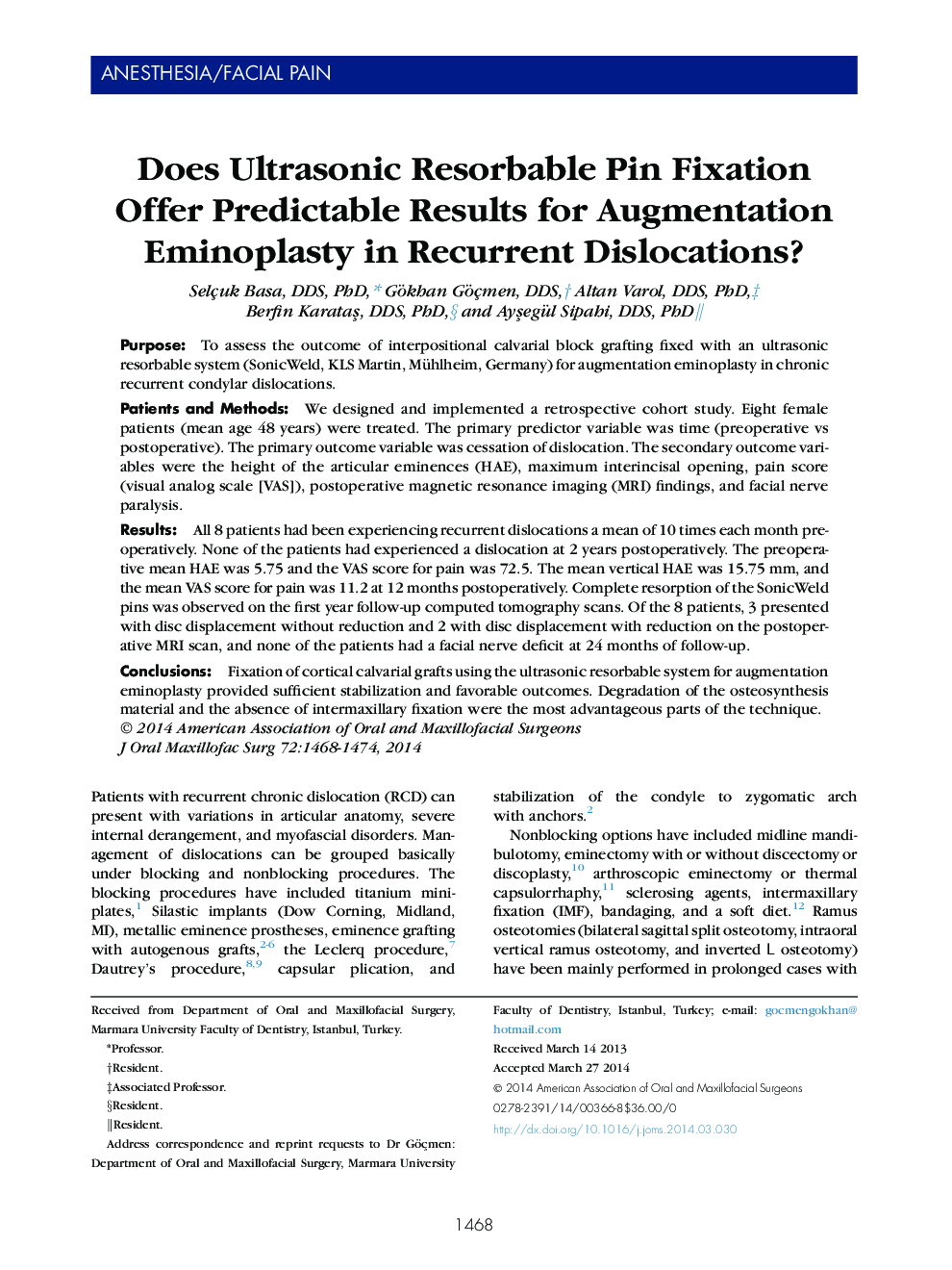| Article ID | Journal | Published Year | Pages | File Type |
|---|---|---|---|---|
| 3156258 | Journal of Oral and Maxillofacial Surgery | 2014 | 7 Pages |
PurposeTo assess the outcome of interpositional calvarial block grafting fixed with an ultrasonic resorbable system (SonicWeld, KLS Martin, Mühlheim, Germany) for augmentation eminoplasty in chronic recurrent condylar dislocations.Patients and MethodsWe designed and implemented a retrospective cohort study. Eight female patients (mean age 48 years) were treated. The primary predictor variable was time (preoperative vs postoperative). The primary outcome variable was cessation of dislocation. The secondary outcome variables were the height of the articular eminences (HAE), maximum interincisal opening, pain score (visual analog scale [VAS]), postoperative magnetic resonance imaging (MRI) findings, and facial nerve paralysis.ResultsAll 8 patients had been experiencing recurrent dislocations a mean of 10 times each month preoperatively. None of the patients had experienced a dislocation at 2 years postoperatively. The preoperative mean HAE was 5.75 and the VAS score for pain was 72.5. The mean vertical HAE was 15.75 mm, and the mean VAS score for pain was 11.2 at 12 months postoperatively. Complete resorption of the SonicWeld pins was observed on the first year follow-up computed tomography scans. Of the 8 patients, 3 presented with disc displacement without reduction and 2 with disc displacement with reduction on the postoperative MRI scan, and none of the patients had a facial nerve deficit at 24 months of follow-up.ConclusionsFixation of cortical calvarial grafts using the ultrasonic resorbable system for augmentation eminoplasty provided sufficient stabilization and favorable outcomes. Degradation of the osteosynthesis material and the absence of intermaxillary fixation were the most advantageous parts of the technique.
